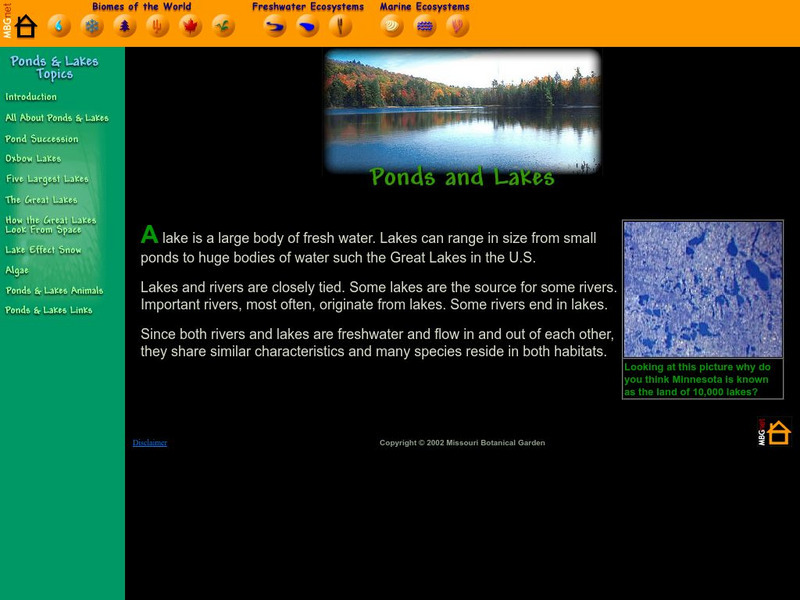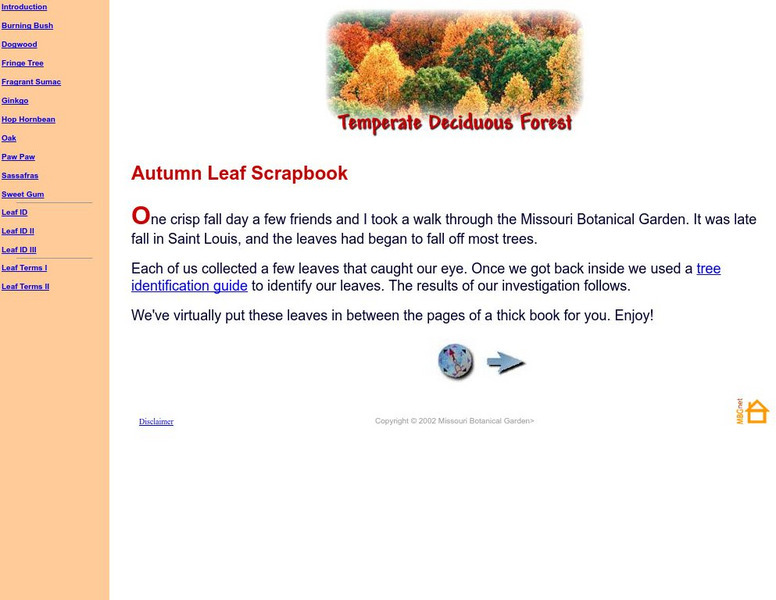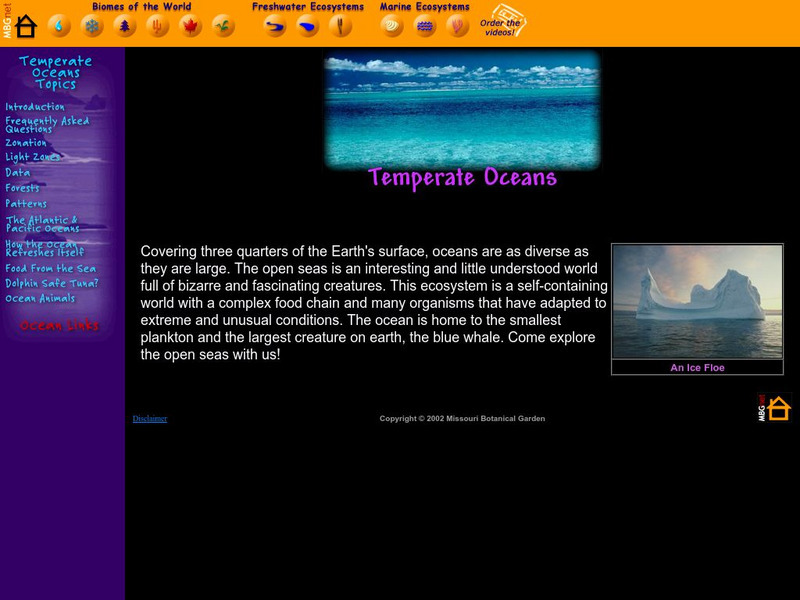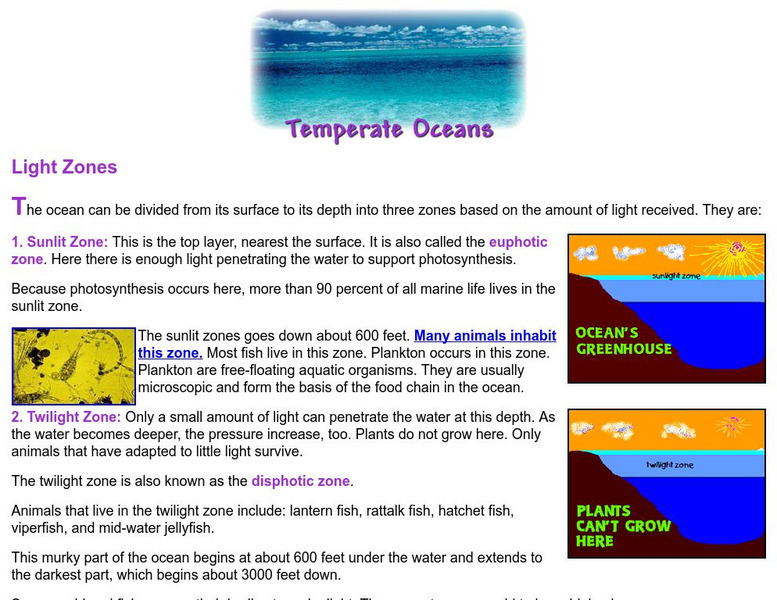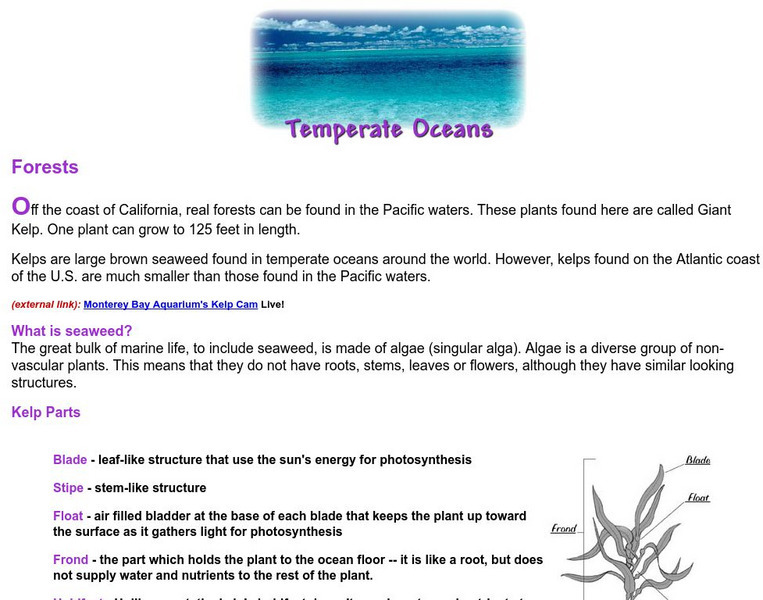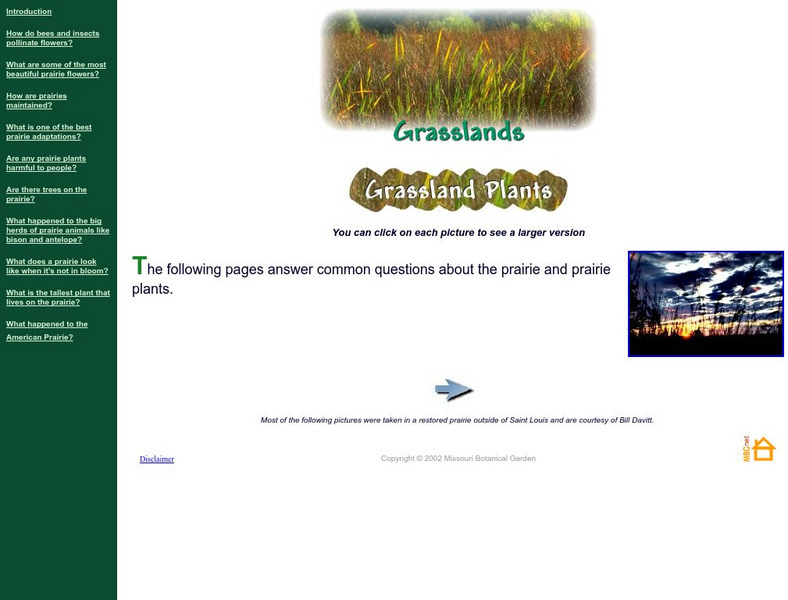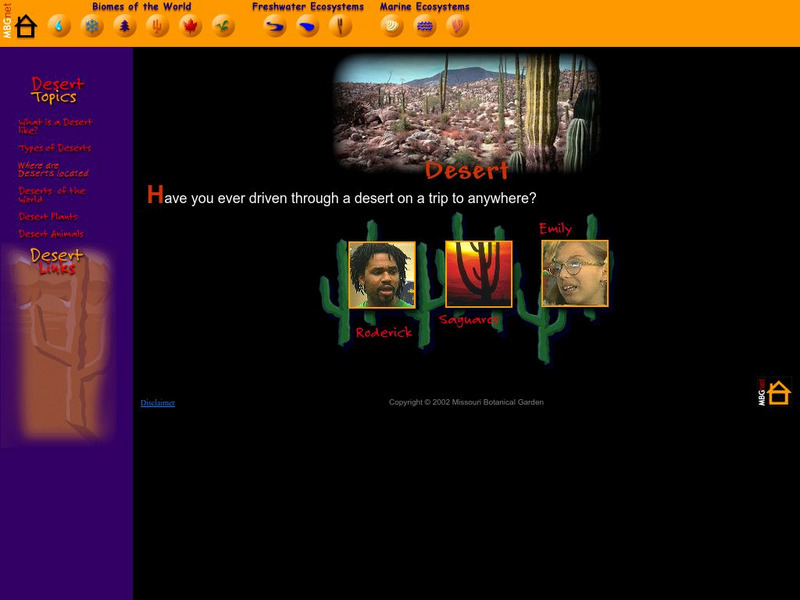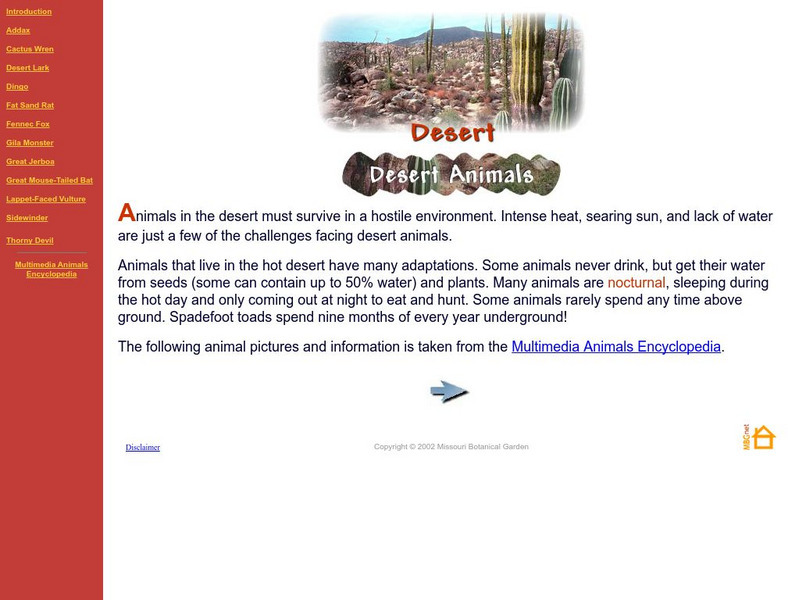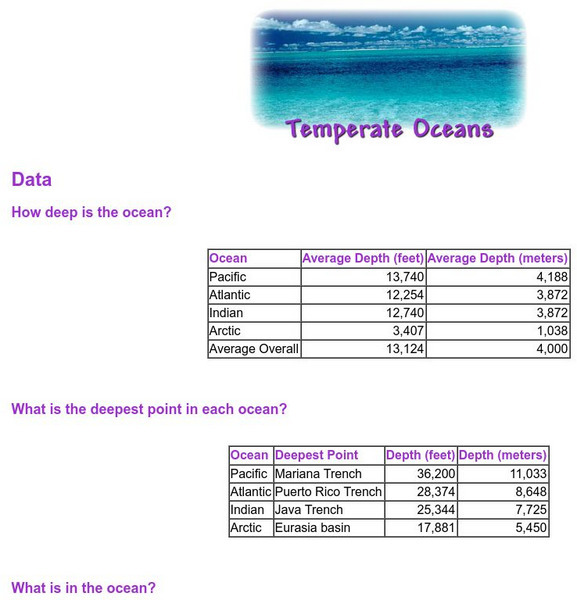Missouri Botanical Garden
Missouri Botanical Garden: Lakes and Ponds
This illustrated website features facts about lakes and ponds and their special place in geography, natural history, and as a biome.
Missouri Botanical Garden
Missouri Botanical Garden: Tundra Animals
Explore this comprehensive resource on the birds and mammals of the tundra. This resource features information such as diet, class, order, size, habitat, conservation range and the like.
Missouri Botanical Garden
Missouri Botanical Garden: Rain Forest Animals
Check out this site to learn more about the different types of animals that reside in the rain forest. This resource provides a link to each animal with a full description of the different animals.
Missouri Botanical Garden
Missouri Botanical Garden: Autumn Leaf Scrapbook
Learn how to examine a deciduous tree and how to identify the various leaves by their shape and color. There is a guide to leaf terminology with helpful accompanying diagrams.
Missouri Botanical Garden
Missouri Botanical Garden: Temperate Oceans
How are the Atlantic and Pacific oceans different? At this site from the Missouri Botanical Garden you can click on the "Atlantic and Pacific Oceans," link to learn all about this topic. Study the two animated illustrations given to...
Missouri Botanical Garden
Missouri Botanical Garden: Temperate Oceans Light Zones
Discover the three zones in the ocean which are determined by the amount of light received from the sun. Pictures illustrate the three zones and there is a listing of the animals that live in each zone.
Missouri Botanical Garden
Missouri Botanical Garden: Giant Kelp
Learn about forests under the Pacific Ocean! Giant kelp is a forest under the ocean that is divided into layers based on the kind of animal life found there. Kelp is useful in making adhesives, dairy products, and pharmaceutical...
Missouri Botanical Garden
Missouri Botanical Garden: Ermine
The Missouri Botanical Gardens offers a general overview of the ermine, a small mammal that lives in the taiga biome. Learn about what ermines eat, how they survive, and how they raise their young.
Missouri Botanical Garden
Missouri Botanical Garden: Eurasian Beaver
Here you can learn all about the Eurasian beaver, a large European rodent that lives in the taiga biome. Content includes information on this animal's appearance, diet, behavior, and more.
Missouri Botanical Garden
Missouri Botanical Garden: Grassland Plants
This site from the Missouri Botanical Garden explores some commonly asked questions about the prairie and prairie plants.
Missouri Botanical Garden
Missouri Botanical Garden: Grassland Animals
This site from the Missouri Botanical Garden provides animal descriptions of several grassland animals. Content includes pictures, fact sheets, and more.
Missouri Botanical Garden
Missouri Botanical Garden: What's It Like Where You Live?
Learn about each biome with this site. Site will give you information about the plants, animals, and the climate found at each biome.
Missouri Botanical Garden
Missouri Botanical Garden: Water Pollution
Water pollution occurs when a body of water is adversely affected due to the addition of large amounts of materials to the water. The sources of water pollution are categorized as being a point source or a non-source point of pollution....
Missouri Botanical Garden
Missouri Botanical Garden: Plants of the Desert
The Evergreen Project reveals such desert plants as the dragon tree, the saguaro cactus, the prickly pear, the desert spoon, the aloe plant, and the like. Illustrated.
Missouri Botanical Garden
Missouri Botanical Garden: Biology of Plants: Plant Adaptations
Read about how plants adapt to survive in different biomes. Includes a song, game, photos, and lesson plans.
Missouri Botanical Garden
Missouri Botanical Garden: Animals of the Desert
Learn about different types of animals that live in the desert biome such as the cactus wren, the desert lark, the dingo, the fat sand rat, the fennec fox, the Gila monster, and so on. Animal pictures and information is taken from the...
Missouri Botanical Garden
Missouri Botanical Garden: Hot Deserts of the World
Find out about the sizes, physical features, and plant and animal life of some of the world's great deserts, including the Arabian, the Great Sandy, the Chihuahuan, the Kalahari, the Mojave, the Sahara, the Sonoran, and the Thar deserts.
Missouri Botanical Garden
Missouri Botanical Garden: Cold Deserts of the World
A chart summarizes the sizes, physical features, plant and animal life, and special facts of a selection of the world's cold deserts, including Antarctica, the Gobi, and the Great Basin Desert in the western United States.
Missouri Botanical Garden
Missouri Botanical Garden: Waves
This site from the Missouri Botanical Garden provides a brief description of how waves form and move. Click on the "waves" link in the toolbar to the left. This site is basic, but very informative. Includes colorful animations...
Missouri Botanical Garden
Missouri Botanical Garden: The Water Cycle
This simple overview provides definitions of key terms in the water cycle and a diagram showing the path water takes in this cycle.
Missouri Botanical Garden
Missouri Botanical Garden: Temperate Oceans
Easy data tables compare the ocean depth of the four oceans, list the deepest point in each ocean, and list how much of different elements are contained in the oceans.
Missouri Botanical Garden
Missouri Botanical Garden: Atlantic & Pacific Oceans
The Atlantic & Pacific Oceans are both very large, but they differ in some important ways. View the two animated illustrations to learn some important facts.
Missouri Botanical Garden
Missouri Botanical Garden: How the Ocean Refreshes Itself
Watch the animated illustrations to see how the nutrients at the bottom of the ocean get circulated to the top. This upwelling is necessary in order to maintain a healthy ocean.
Missouri Botanical Garden
Missouri Botanical Garden: Food From the Sea
Did you know that 80% of the fish we eat comes from the ocean? Since oceans cover so much of the earth you would think that we would never be in danger of running out of its resources. Learn how overfishing is causing many problems with...


